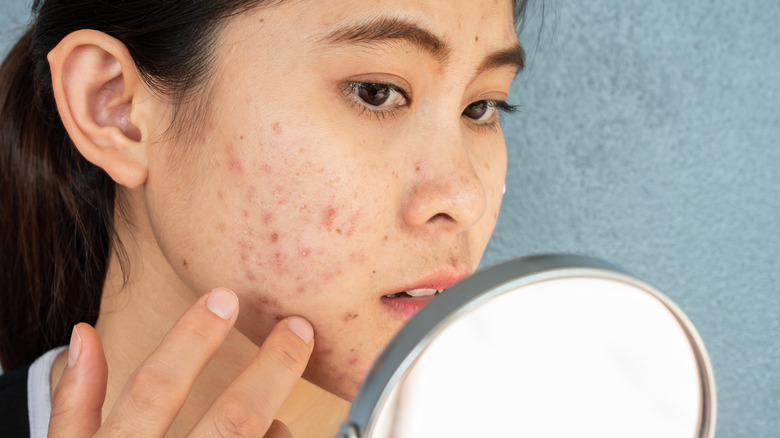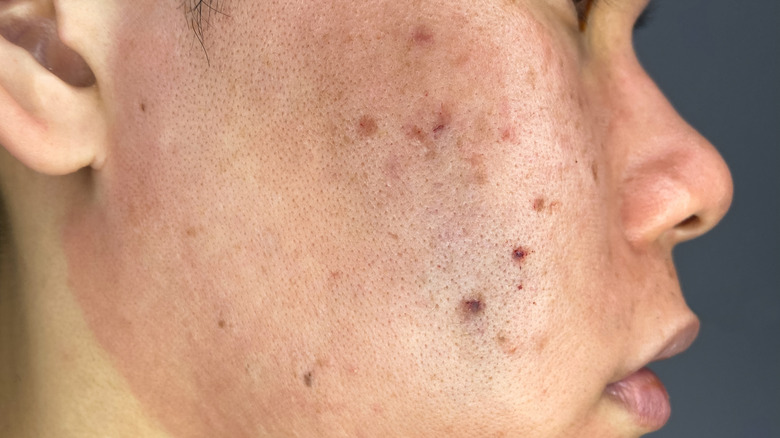What Is Subcision And How Does It Help Acne Scars?
Acne scars can be stubborn and sometimes even more infuriating than the breakouts themselves. There are a number of approaches to treating them, some more aggressive than others. One of the more aggressive treatments involves injections from small needles below the scar to remove it. Here's how this procedure, known as subcision, can help with your acne scars.
Before we get into how to treat them, let's touch on how acne scars are formed and why they're so difficult. Ultimately, acne scars are the result of inflammation that occurs from your acne breakouts, per Cleveland Clinic. While some of the acne scars that comes from breakouts are shallow enough to heal on their own, sometimes, the blemish can spread causing "deeper scars." It is these deeper scars that can cause the most difficulty to heal and create a visible acne scar you'd want to get rid of thanks to subcision. Here's how the treatment works.
Subcision can also be used on depression scars, wrinkles, cellulite, chicken pox scars, and surgical scars, per Healthline, so it has more use than just for breakouts. However, it is highly effective as a form of acne scar treatment.
Subcision and acne scars
There are multiple benefits associated with using subcision to treat acne scars. Along with lessening the amount of scar tissue, it also improves the overall appearance of your scars, promotes the production of new collagen, and improves the texture of your skin, per Wall Street Dermatology. The procedure involves a dermatologist inserting a hypodermic needle in the area of the skin directly beneath the scar. It is then used to loosen and break the fibers that connect the scar to the tissue below it. This process can also help new scars from forming in the area.
Speaking with Byrdie, board-certified dermatologist Marisa Garshick, MD, explained how it all works. "Subcision works to improve the overall appearance of depressed or rolling scars by helping to relieve the fibrous strands that are tethering the scar tissue down as well as by helping to promote new collagen production," Garshick said. "Together, this helps to improve the overall texture of the skin associated with the scarring. It is a great treatment option for those with localized acne scarring as it can effectively target a few scars without impacting the rest of the skin. This makes it particularly good for someone who is concerned about a few scars, while still being an effective option for someone with more scarring as well."
The procedure can range from $100 to $500 per session, so it is an investment. However, it is one that can pay off if acne scars are a major issue.

